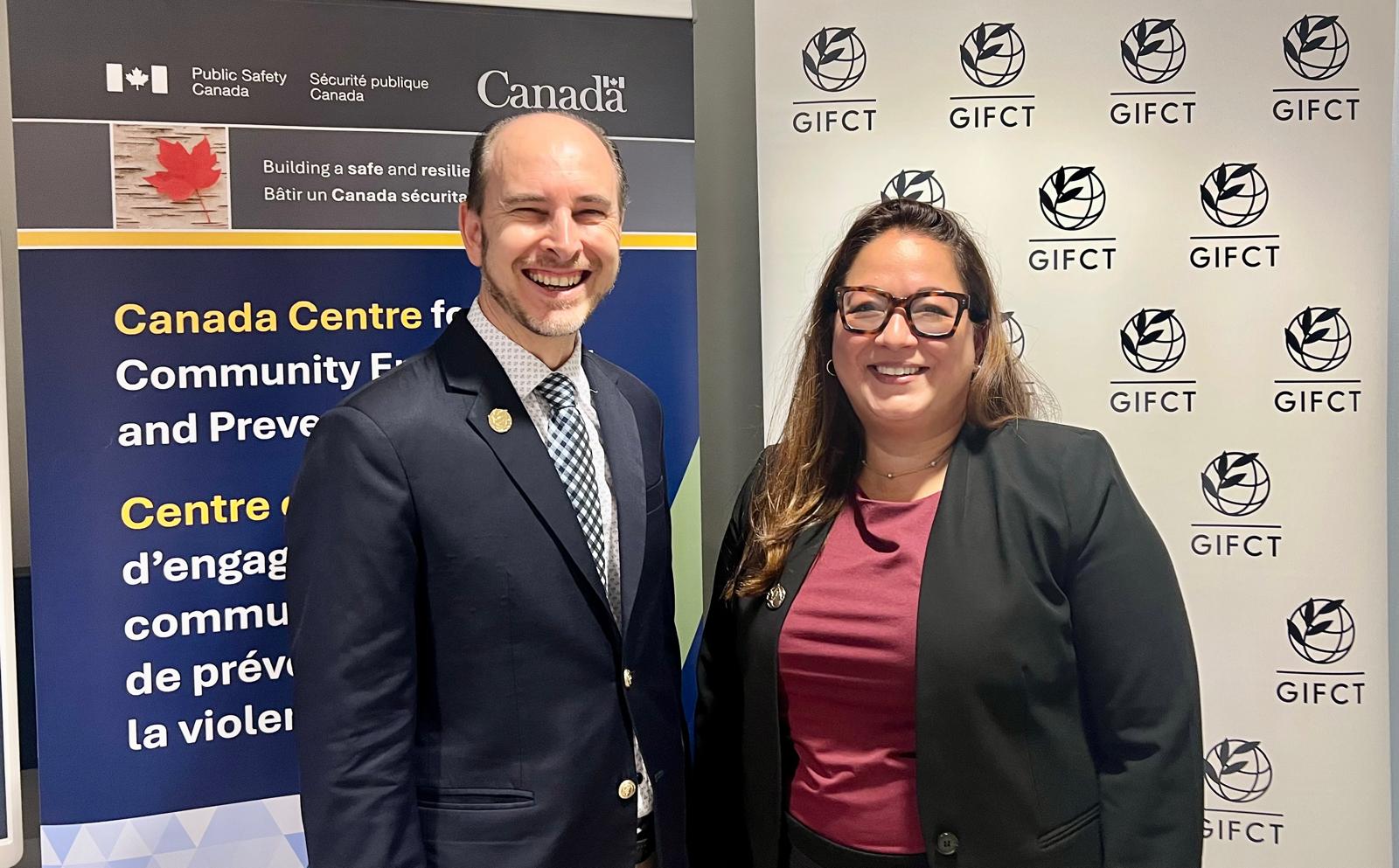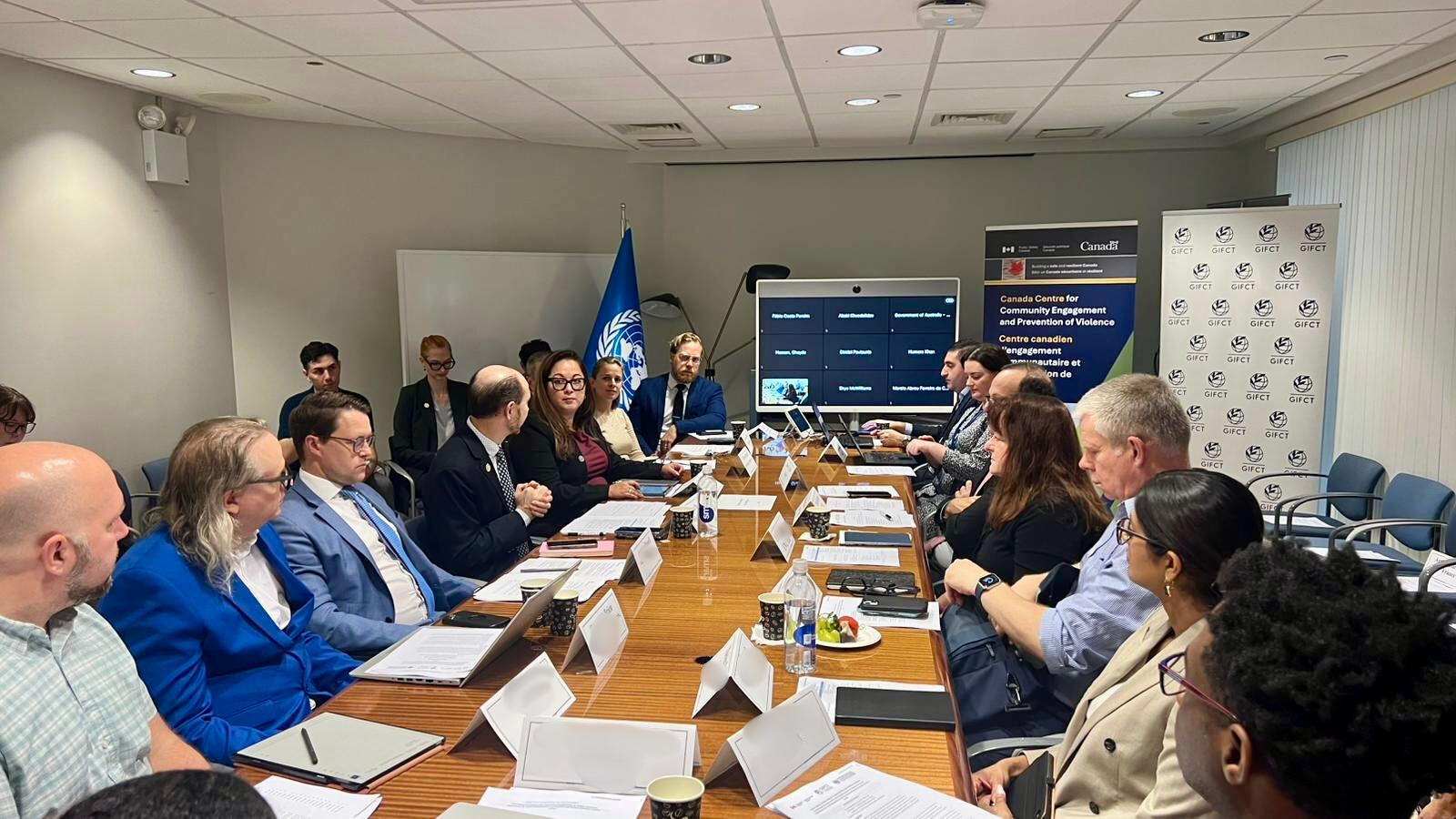On Friday, September 26th, GIFCT cohosted a roundtable with Public Safety Canada (PSC) and the United Nations Counter-Terrorism Committee Executive Directorate (CTED) to foster discussion and an exchange of experiences among frontline practitioners, industry, and government representatives working on addressing, preventing, and countering terrorist and violent extremist content online. The roundtable built on GIFCT’s event earlier in the week, “Online Subcultures, Youth Exploitation, and the Shifting Landscape of Terrorism,” by focusing on the unique challenges—and opportunities—of protecting young people in digital spaces.
Developing Prevention and Countering Radicalization to Violent Extremism Approaches for Youth Radicalization and Terrorist and Violent Extremist Content Online
PSC Executive Director Robert Burley, GIFCT Executive Director Naureen Chowdhury Fink, and CTED Director and Chief of Branch, David Scharia opened the event by setting the stage and stressing the importance of multistakeholder representation and the desire to apply the day’s learnings to actionable interventions. Offline and online dimensions are increasingly intertwined, and collaboration across sectors – government, civil society, and industry – is critical to building safer and more resilient online communities. Together, their remarks underscored the shared commitment to collaboration, knowledge exchange, and translating insights into concrete actions to better protect children from interconnected online and offline threats.

PSC Executive Director Robert Burley and GIFCT Executive Director Naureen Chowdhury Fink
Public Health Impact: Insights From Frontline Practitioners
The opening session, featuring Ghayda Hassan, Founder and Executive Director of the Canadian Practitioners Network for the Prevention of Extremist Violence and David O’Brien, Director of Mental Health Services at Yorktown Family Services, presented youth radicalization as an urgent public-health crisis, warning that children are being routinely exposed to harmful content online. The speakers warned that children as young as seven are spending many hours online and being targeted for recruitment by terrorist and violent extremist groups. Mental health challenges are often identified as contributing factors to increased vulnerability among youth with the confidentiality of many closed online spaces enabling discrete mobilization and targeting. Given the need to address multiple harm types that may converge, interventions are needed from a range of practitioners. A rapid and coordinated use of existing frameworks, stronger practitioner engagement with youth in digital spaces, and integrated prevention that treats radicalization as both a health and public safety urgency would be critical to strengthen mitigation efforts.
Lessons Learned: Preventing and Countering Terrorism and Violent Extremism
The second session, moderated by CTED Chief of Section (Asia-Pacific and the Americas) Elizabeth Joyce, turned to lessons learned from prevention interventions and the outcomes of their work. Speakers from CIVIX, Moonshot, and Violence Prevention Network emphasized the importance of equipping youth to navigate complex online environments while connecting at-risk individuals to offline support. An example shared by CIVIX from Canadian schools demonstrated that digital literacy training can measurably improve students’ ability to identify false and misleading information and resist manipulative content. The speaker stressed that this skill must be cultivated as an ongoing habit rather than through one-time instruction.
Positive interventions offline and online, such as tech-based large-scale online engagement strategies, can identify vulnerable users in digital spaces and redirect them to life-saving services. Participants cited thousands of successful connections in Canada and the U.S. that link online behavior to tailored offline support. Moderation alone cannot address violent extremist behavior but technology companies are uniquely positioned to spot early warning signals. Digital interventions must be timely, credible, and closely tied to trusted service providers in local communities.
Tech Interventions: Addressing Youth Radicalization Online
Senior representatives from technology companies, including TikTok, Meta, Yahoo, and Roblox shared insights regarding industry approaches and solutions during a discussion moderated by GIFCT Executive Director Naureen Chowdhury Fink. While young people spend much of their time on digital platforms, these are often unfamiliar spaces for parents, educators, and practitioners, creating a disconnect in prevention efforts. To bridge that gap, speakers noted, companies are experimenting with new tools—from behavior-based messaging, custom interventions and search friction, to youth councils that give teenagers a direct voice in shaping safety policies.
Panelists acknowledged the limits of moderation alone, noting the important roles of civil society to strengthen prevention, redirection, and inform referral pathways that connect at-risk users to offline services. Shared playbooks, better metrics, and cross-platform collaboration could help to keep pace with fast-evolving violent extremist tactics. Collectively, industry representatives stressed the value of treating youth as partners in building safer online spaces.
Looking Ahead: Applying Findings and Taking Action
The closing discussion focused on translating insights into concrete action, with participants stressing that no single government, company, or organization can solve the problem alone, reiterating the need for stronger multistakeholder cooperation anchored in child rights and the rule of law. The interactive discussion highlighted key insights and recommendations for practitioners, policymakers and tech companies and stressed the importance of collaboration and partnerships with youth and civil society, including through continued support and education.
Prevention hinges not just on scale, but on speed. Delays in delivering meaningful online interventions can have real-world consequences. Stronger data sharing and evaluation, multistakeholder knowledge sharing and collaboration and an investment in youth are critical elements for successful strategies. For a comprehensive list of takeaways from the roundtable, see this resource from PSC.
GIFCT would like to thank Public Safety Canada and CTED for partnering on this event, and express our gratitude to participants who shared their expertise and insights.





